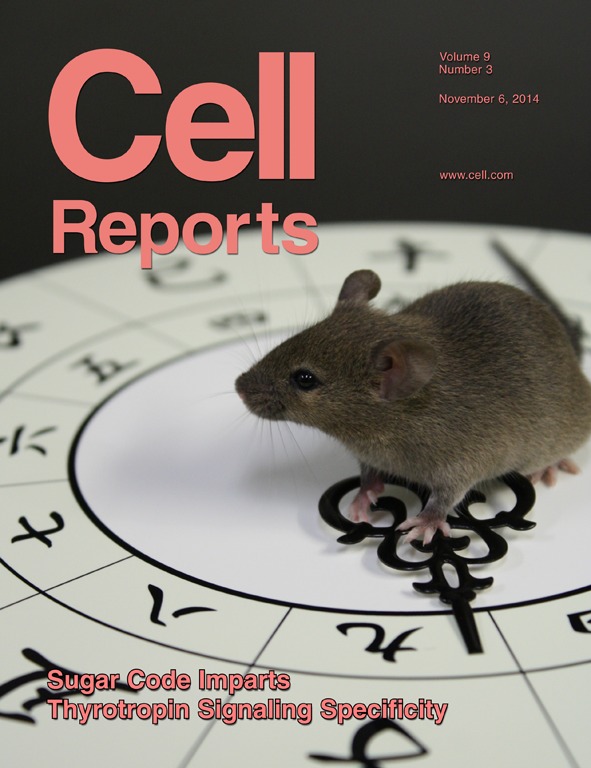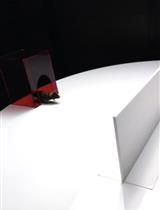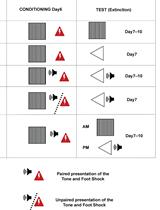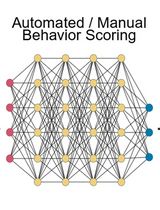- EN - English
- CN - 中文
Displaced Object Recognition Memory in Rats
大鼠物体位置再认记忆
发布: 2019年04月20日第9卷第8期 DOI: 10.21769/BioProtoc.3212 浏览次数: 6303
评审: Edgar Soria-GomezGilliard LachEmma Puighermanal
Abstract
The Displaced Object Recognition (DOR) task, sometimes called the Novel Object Location task, assesses spatial recognition memory without navigational demands, explicit instruction, or the need for multiple days of training. This memory task has two phases. First, the subject is familiarized to an open arena with two objects and is allowed to explore the objects. Following a delay period, the subject returns to the arena, but one of the previous objects has been moved to a new location. Greater exploration of the displaced object is used as the index of memory for the previous object location. An advantage of the DOR task is that subjects can be tested without explicit training, since this task exploits the natural tendency to be more interested in something novel. The spontaneous aspect of this task allows for the testing of animals as well as human populations that are unable to follow verbal instructions, such as babies. Therefore, this powerful test of recognition memory can be administered similarly for many species, including rats and humans, allowing for better translatability.
Keywords: Hippocampus (海马)Background
Animal models are critical for developing a better understanding of human memory function and dysfunction. Early animal studies examining memory dysfunction reported the critical importance of the hippocampus and surrounding cortical regions within the medial temporal lobes (Winocur, 1990; Zola-Morgan and Squire, 1990; Squire et al., 2001). One area of memory function that has been found to be particularly dependent on the hippocampus is spatial memory formation and retrieval. Many of the spatial memory tasks which are most sensitive to hippocampal damage or disruption are those that involve navigation, such as the radial arm maze, Barnes maze, and Morris Watermaze (Clark et al., 2007). Although such tasks are valuable, there are some limitations and potential confounds in using tasks that require navigation. For example, certain populations may have difficulty in navigating, but can still form and retrieve spatial memories. In addition, the performance aspect of navigation, independent of the spatial memory, may require the recruitment of additional brain areas. Therefore, it is important to have tests of spatial memory that are non-navigational. The DOR task provides a means for assessing spatial memory recognition without the animal having to navigate to a learned reference location in order to express the memory.
Materials and Reagents
Note: All materials and reagents listed are examples based on what has been used successfully using the protocol provided; however, using different bedding, objects, rat strains/ages could also be successful.
- Bed-o-cob ¼ in (Fisher Scientific, Harlan Teklad, catalog number: NC9335529)
- Screws
- Wide-Mouth Opaque Amber Plastic bottles 250 ml (Thermo Scientific, Nalgene, catalog number: 02-923-103)
- Rats (any strain that is able to visually discriminate objects)
- Ethanol 70% (Fisher Scientific, Decon Laboratories, catalog number: 04-355-223)
Equipment
- Apparatus: opaque storage bin, dimension 60.7 cm (W) x 40.4 cm (D) x 41.9 cm (H) (Rubbermaid, 18 gal, 2215)
- Drill (e.g., Black+Decker Cordless Power Drill)
- Video camera (e.g., Sony Handycam camcorder, such as HDR-CX405)
- Timer (e.g., Fisherbrand Digital Timer, catalog number: 06-662-55)
Software
Note: Software listed below describes what has been used successfully using the protocol provided; however, using alternative software that allows for scoring of object exploration could also be successful.
- Analysis software (ODLog 2, macropod software, http://www.macropodsoftware.com/odlog/)
Procedure
文章信息
版权信息
© 2019 The Authors; exclusive licensee Bio-protocol LLC.
如何引用
Mclagan, A. N. and Hales, J. B. (2019). Displaced Object Recognition Memory in Rats. Bio-protocol 9(8): e3212. DOI: 10.21769/BioProtoc.3212.
分类
神经科学 > 行为神经科学 > 学习和记忆
您对这篇实验方法有问题吗?
在此处发布您的问题,我们将邀请本文作者来回答。同时,我们会将您的问题发布到Bio-protocol Exchange,以便寻求社区成员的帮助。
Share
Bluesky
X
Copy link













